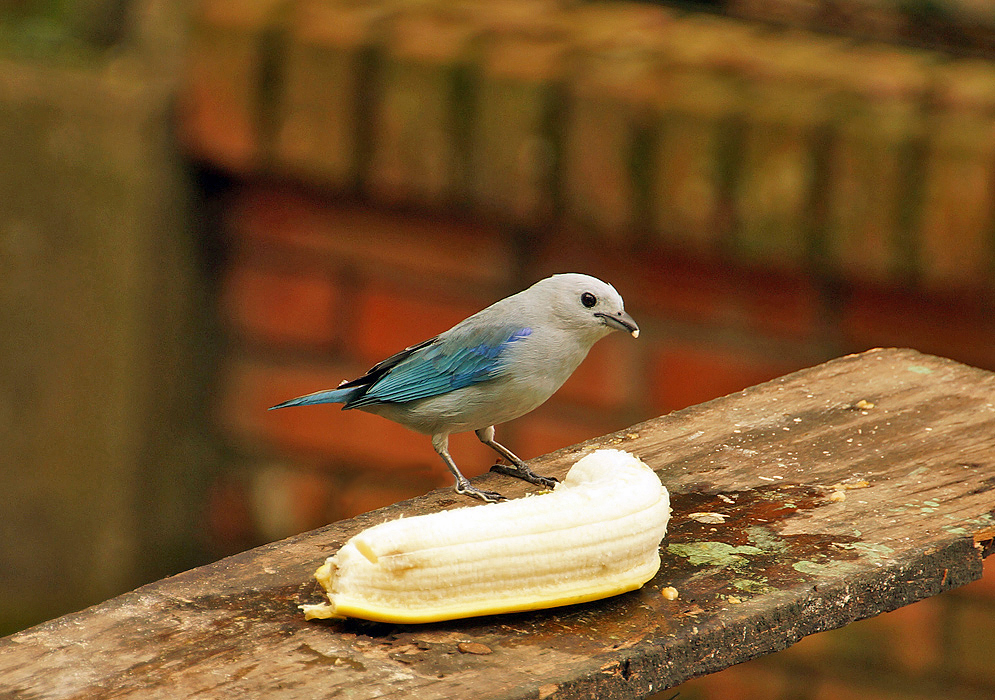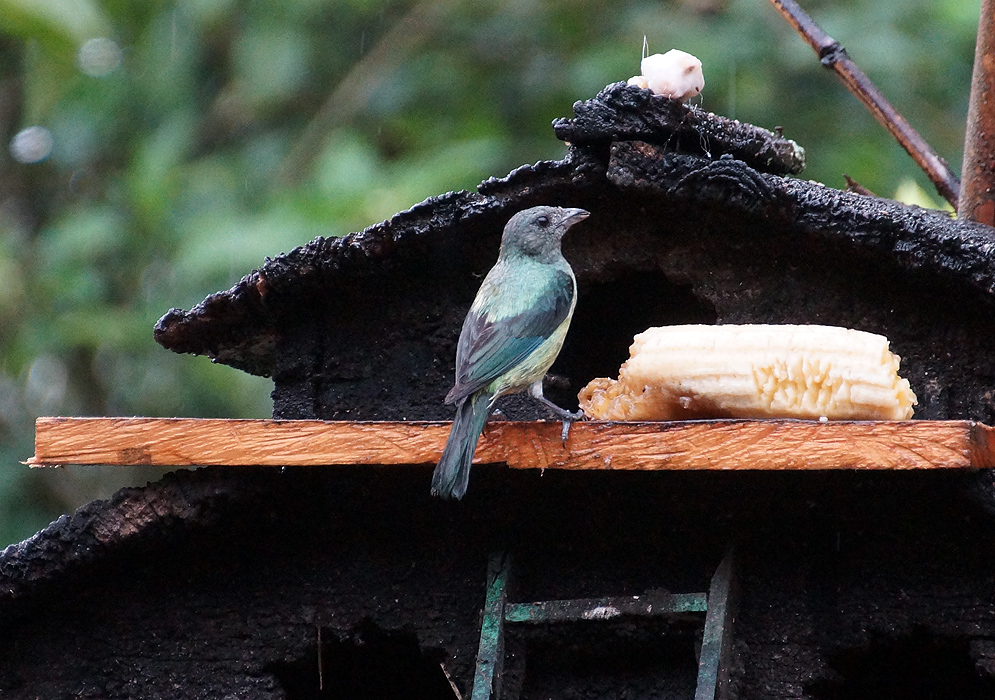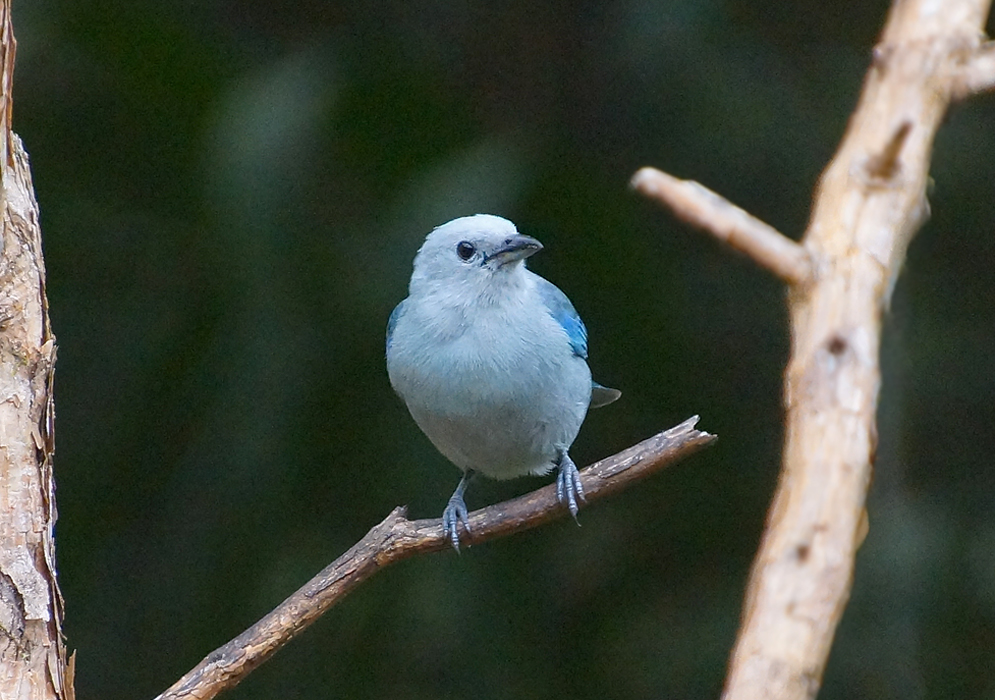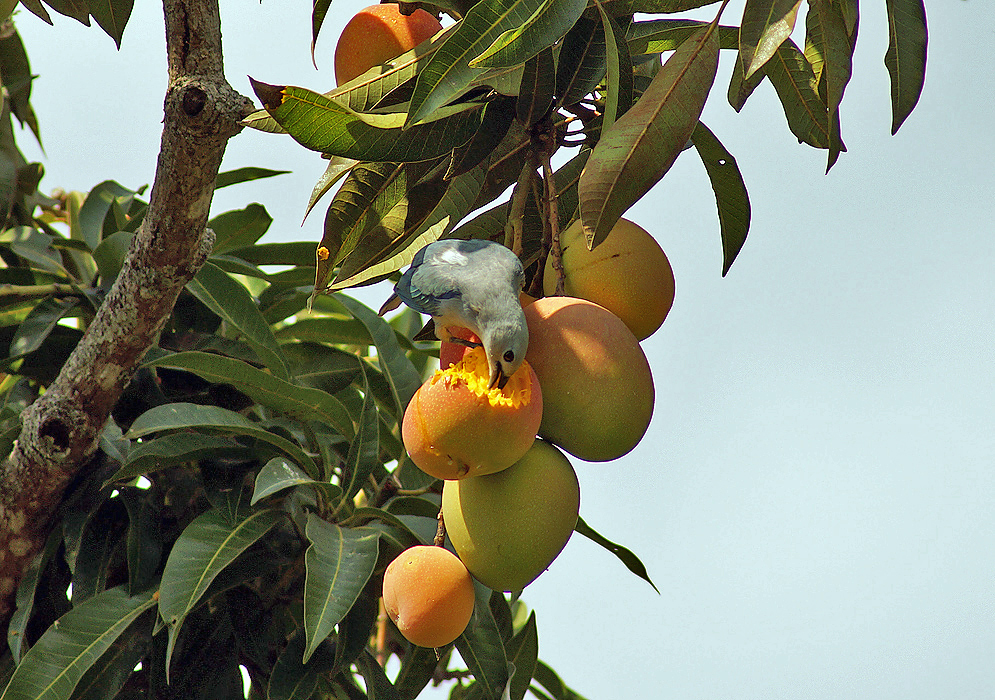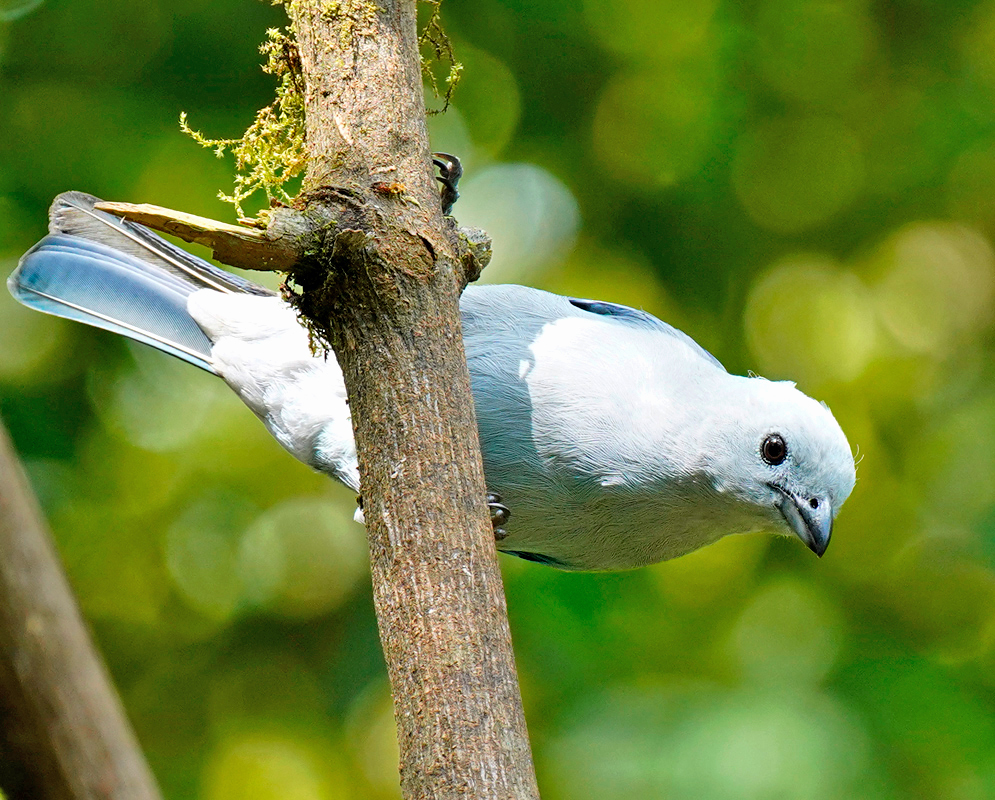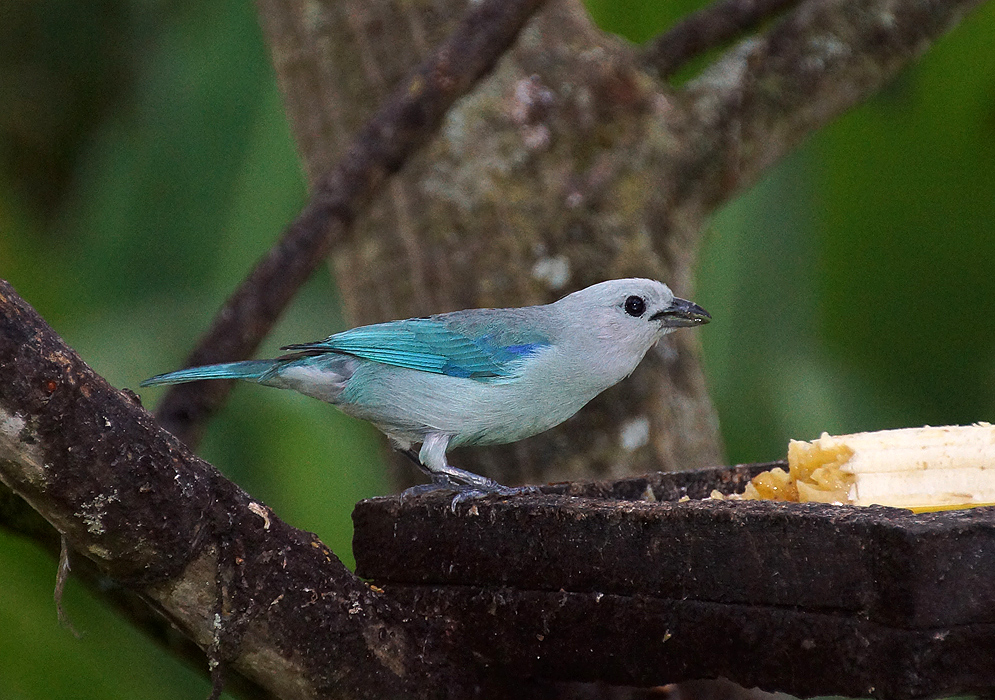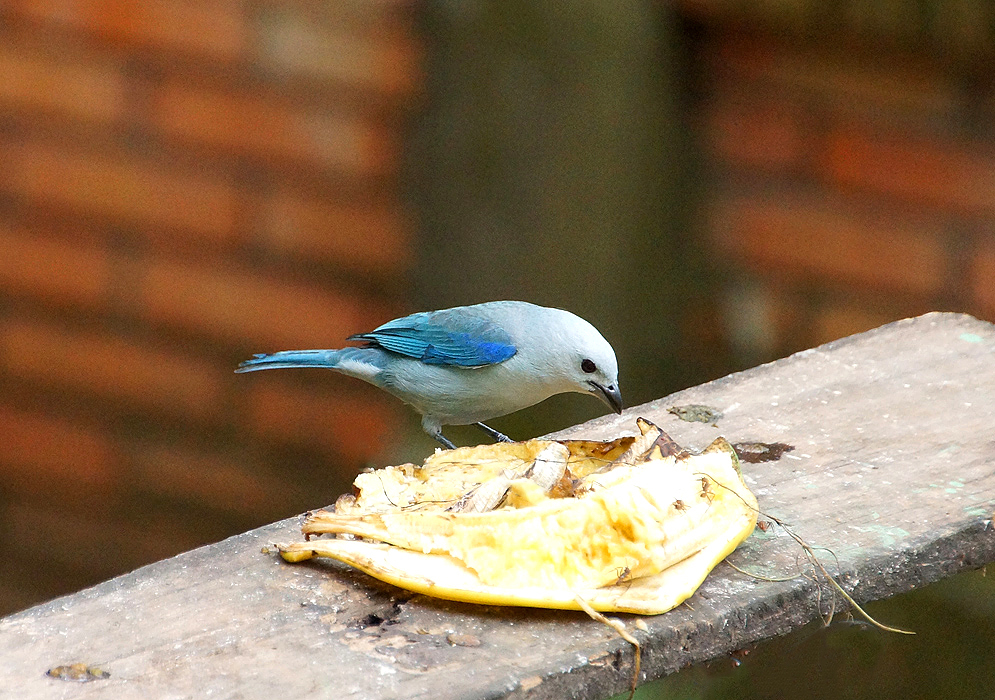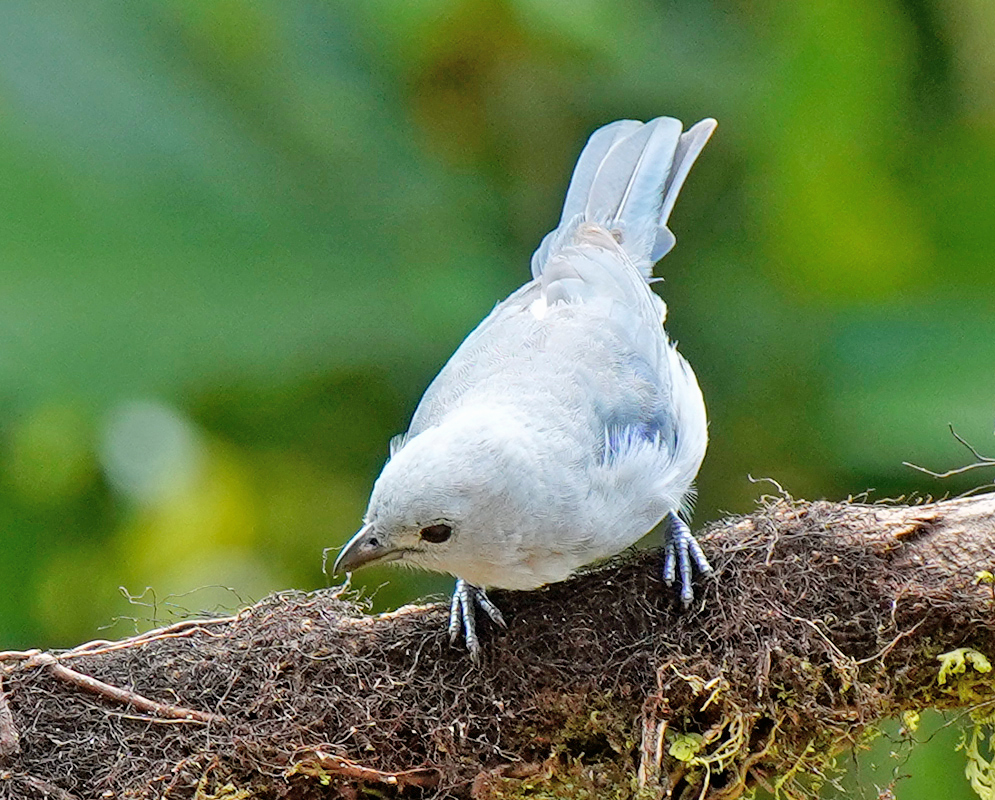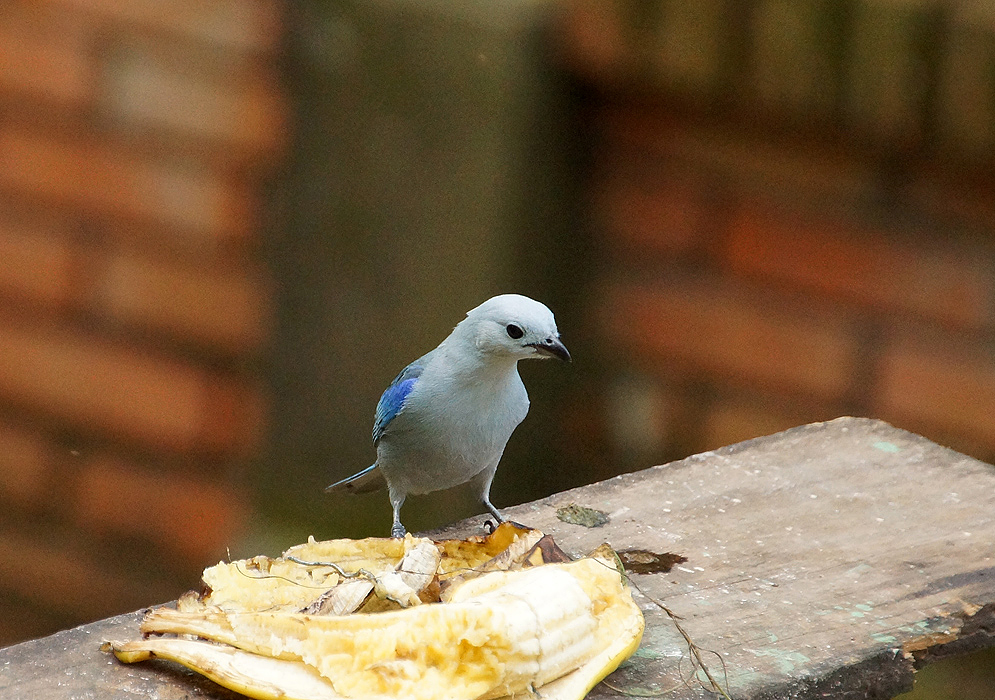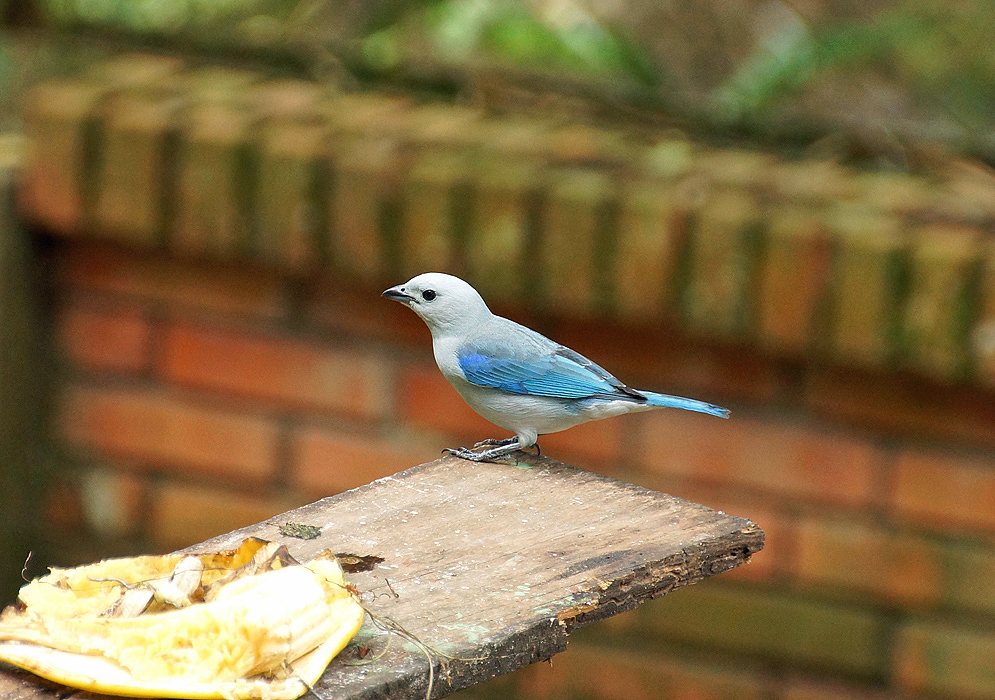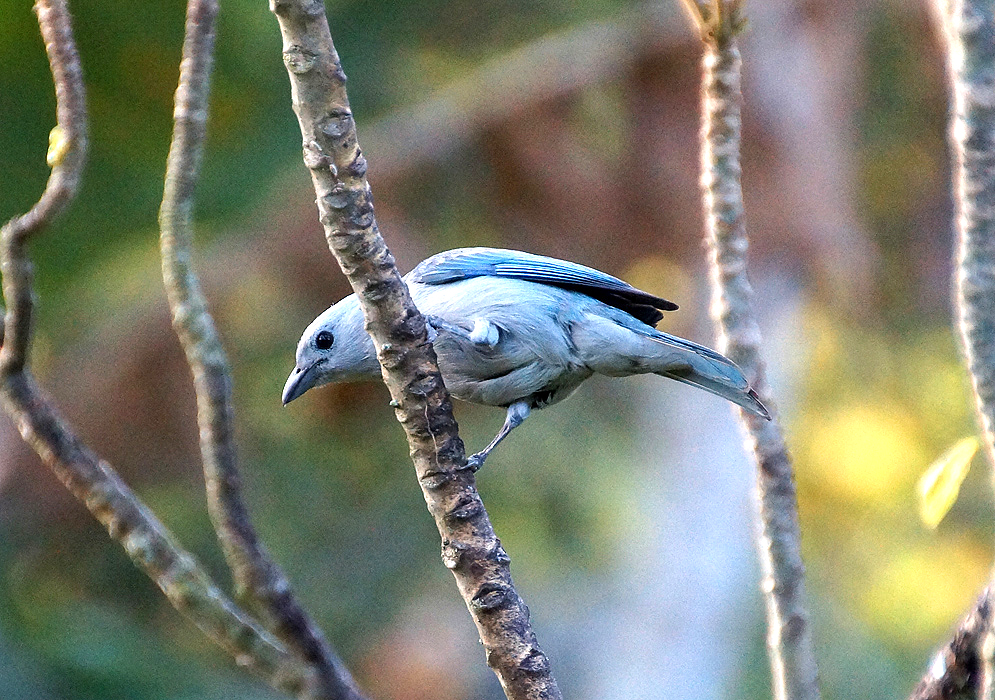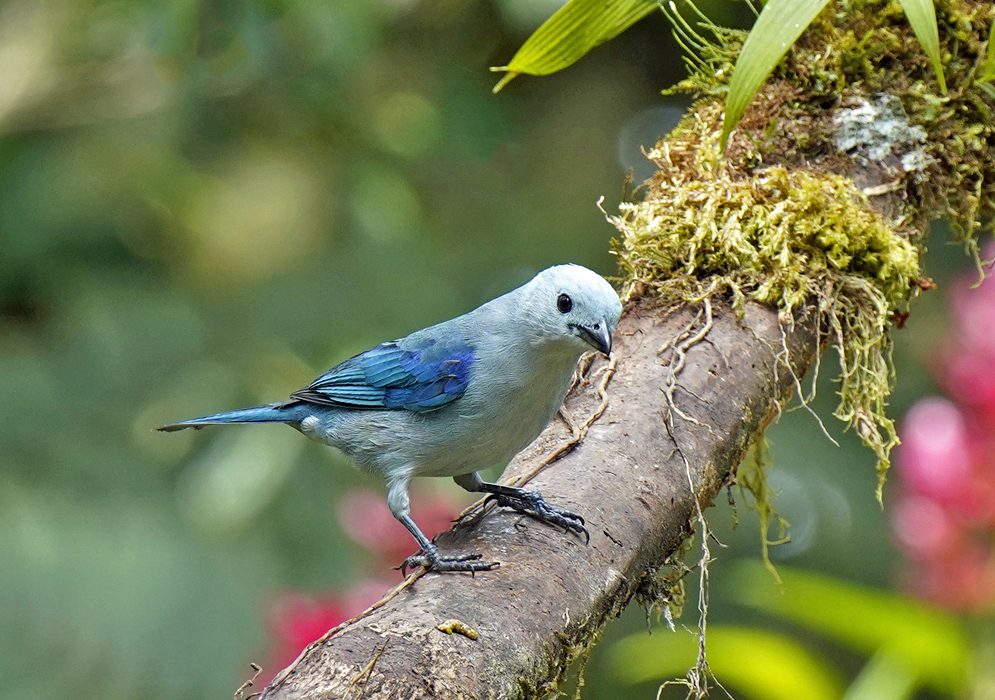This post has 11 Simple Fields-fields attached. Show fields.
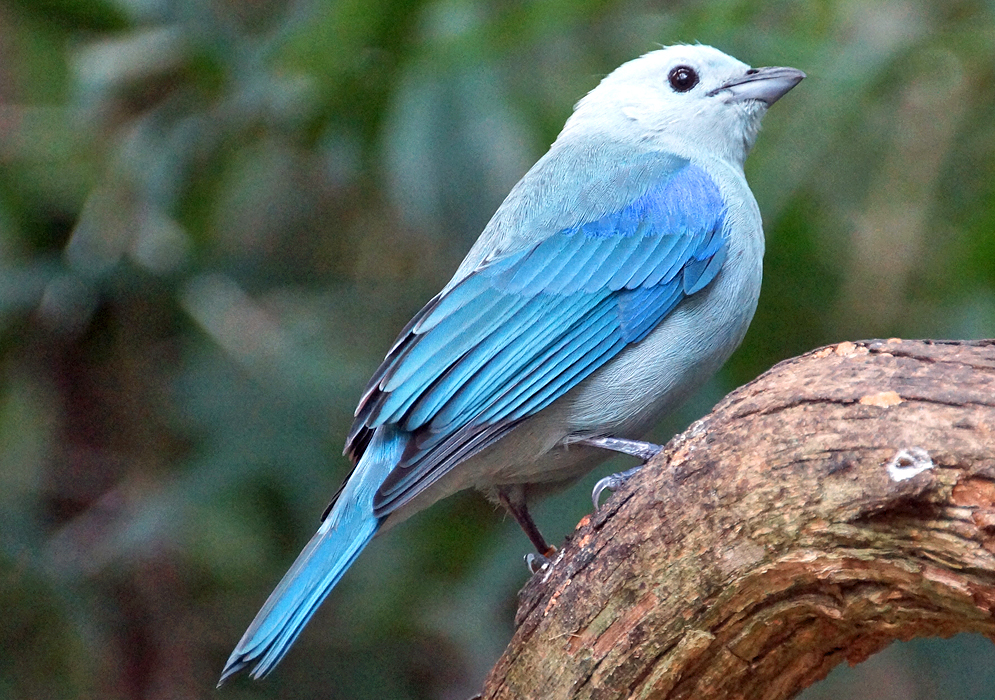
The Blue-gray Tanager is a medium-sized South American songbird of the Tanager family, Thraupidae. It inhabits a wide range from Mexico to northeast Bolivia and northern Brazil, encompassing the Amazon Basin, except for its southernmost parts. The species has also been introduced to Lima, Peru. The Blue-gray Tanager is distinguished by its light bluish head and underparts, darker blue upperparts, and a shoulder patch of varying blue hues. There are 14 recognized subspecies of this bird, with variations in the exact shade of blue across their plumage and the hue of their shoulder patch, which can be lavender, dark blue, or whitish. The species measures approximately 6.3 to 7.1 inches in length and weighs around 1.1 to 1.4 ounces. Both male and female adults share similar coloration, while the immature birds are much duller. The Blue-gray Tanager predominantly feeds on fruit but also consumes nectar and insects. Found typically in pairs or small groups, they are a common, restless, and noisy species, often observed in open woodlands, cultivated areas, and gardens. They are also known to thrive around human habitation and may forage for cultivated fruits like papayas. The breeding involves laying one to three eggs, usually two, in a deep cup nest located in a high tree fork or a building crevice. The female incubates the eggs for about 14 days, followed by another 17 days until the chicks fledge. The nests of Blue-gray Tanagers are sometimes parasitized by Molothrus cowbirds. Photographed in the Sierra de Nevada, Colombia.
